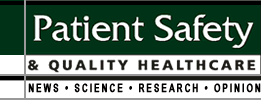 |
 |
 |

January / February 2005

PACS and Patient Safety
How PACS Addresses Patient Safety Across the Hospital Enterprise

By Matt Long
The Institute of Medicine's report on medical errors, To Err Is Human: Building a Safer Health System (IOM 2000), sent a tremor through the healthcare industry as it reported that in the United States as many as 98,000 people die each year from medical errors. What made the number even more dismaying was that many of those deaths result from avoidable medical errors.
The report certainly had a consciousness-raising effect. However, a report delivered in July 2004 by HealthGrades, Inc., Patient Safety in American Hospitals, provided an update that could only be deemed devastating. According to the report, the number of people killed by medical errors each year in U.S. hospitals has gone up, not down. The figure is now estimated to be 195,000 — twice as many as estimated in the IOM report. To place the figure in context, hospital medical errors are the sixth-leading cause of death in the country, behind diabetes, influenza, pneumonia, Alzheimer's disease, and kidney disease.
If the IOM report identified patient safety as one of the most significant issues facing healthcare organizations, then the HealthGrades report should push the urgency pedal to the floorboard.
The period between the IOM report and now (1999 to 2004) not only witnessed an increasing awareness about medical errors and subsequent patient safety initiatives, but it saw the concurrent emergence of picture archiving communications systems (PACS). Such systems were viewed — albeit with a somewhat limited perspective — as an available tool that could increase patient safety. With the release of the new study, PACS will become a necessary and vital part of the movement to modernize healthcare technology. PACS has already made significant contributions to patient safety, and it will add even more.
The PACS Advantage
According to the HealthGrades report, of the three types of errors that accounted for almost 60% of patient safety incidents, one was failure to diagnose and treat in time. Experience has shown that PACS can have a positive impact in this area.
"PACS really improves the timeliness of care and treatment, because you have images available to all members of the care team instantly, so they can diagnose a patient much more efficiently," comments Jane Englebright, Ph.D., R.N., vice president of quality for the Nashville, Tennessee-based HCA, Inc., a leading provider of healthcare services.
Englebright, who leads patient safety initiatives for HCA, adds that the capability is crucial in areas like the ER and ICU. "In the ER, where films are read by subspecialists, a PACS enables us to get images to them, wherever they are."
Herman Oosterwijk, president of OTech, a consulting company that helps clients implement healthcare technology solutions, concurs: "A well-designed, modern PACS can improve patient safety by enabling timely interpretations based upon reliable and readily available prior exams."
Along with availability of images and timeliness of care, Oosterwijk, author of the book PACS Fundamentals (2004), says PACS provides:
- Increased efficiency
- Enhanced accuracy
- Improved access to vital information
As far as increased efficiency and enhanced accuracy, PACS has dramatically shortened the cycle time from exam to diagnosis. Exam results are quickly delivered from radiology to the physician who makes the treatment decision. PACS enables the physician to have images and information needed to make a more accurate treatment suggestion or plan.
In addition, PACS makes previous images — a patient's entire radiological history — always and instantaneously available. This is important when treating conditions such as cancer, when an oncologist may want to see the most recent exam, recent prior exams, and the baseline exam, which can be as much as 10 years old.
PACS also fosters communications among healthcare professionals. It is vitally important that physicians share data and consult with each other on patient care, but consultation and collaboration is very difficult in the film-based facility. With PACS, any number of physicians can look at the same examination at the same time, essentially doing a real-time consultation. This significantly enhances the level of care.
When PACS is fully utilized, the technology can play a significant role in reducing the potential for error by eliminating steps in the distribution and management of images and associated patient information across the enterprise. Hospital staff and physicians can schedule and order exams, update patient information across an enterprise, provide information and images to physicians at the point of care, and provide diagnostic tools, features, and functionality to ensure the highest quality of interpretation and diagnosis.
Moving Beyond the Limitations
While an increasing number of facilities are installing PACS, many are missing out on maximum benefit by not fully utilizing them. Indeed, much of its potential remains untapped because of limitations imposed on the technology. Those limitations don't necessarily involve the technology itself. Rather, they have to do with how people perceive PACS and use it. The time has come to move beyond those limiting factors. The HealthGrades report helps make that clear.
One of the main problems is that many PACS vendors only offer a departmental PACS strategy. Both flexibility and scalability are limited, and clinician collaboration suffers as a result. Unfortunately, many users, too, share this departmental perspective. This view is shortsighted, particularly for larger facilities where other information systems are present and more and more data is being distributed across hospital networks. PACS is much more than a radiology tool; it should be incorporated across the hospital enterprise so that it benefits all departments. The coordination of image distribution and management across the enterprise requires much more than a departmental PACS solution. By not addressing this, traditional PACS have failed to deliver the operational and clinical benefits of true enterprise-wide image and information management. Fortunately, information technologists are beginning to look outside of the box and are developing enterprise-oriented solutions.
Another necessary and logical leap for PACS — one that meshes perfectly with the enterprise-oriented outlook — involves integration and incorporation with other information technologies.
"We can see how different safety technologies can come together," comments Englebright. "I see bar coding, coupled with radio frequency identification, as the ultimate solution for ensuring positive patient identification at the point of care, and PACS would incorporate that technology."
Englebright describes it as a three-pronged approach, with each technology complimentary to the other, to create a more efficient and safer transmission of information.
PACS may also be integrated with other technologies to have a dramatic impact on the delivery of patient care:
- PACS — a system that enables true enterprise delivery, not just within radiology
- EMR — the electronic medical record, including all of the patient's images, pathology, surgical results, history, etc.
- CPOE — computerized physician order entry
Each in isolation helps somewhat, but the combined effect of the three is much greater. Integration will provide all of the information related to the patient.
The Enterprise Approach
Despite the fact that PACS has been around for about 10 years, it has not delivered its full potential outside the radiology department, nor its full potential to improve patient safety.
Because many installed PACS don't meet the needs of physicians outside of radiology, hospitals are still printing film and distributing it to those physicians. For PACS to achieve maximum clinical impact, clinicians need instant access to diagnostic-quality images all of the time, no matter the location, time, or workstation.
This approach is aimed at allowing customers to focus on the enterprise as a whole; it addresses imaging domains across the entire enterprise, including radiology, cardiology, dermatology, and pathology. As far as radiology, it enables the department to operate more efficiently through increased collaboration with referring physicians, as it fosters a closer relationship with the immediate care team.
This enterprise approach (enabled by Stentor's iSyntaxTM technology) utilizes mathematical representations of images called wavelets and allows for on-demand delivery of high-quality images by hundreds of users without any noticeable loss of speed. It provides users with instant access to as much imaging data as they require based on their interaction with the image. Diagnostic-quality images can be delivered over existing hospital networks, providing advanced radiology reading stations for radiologists and "always online" long-term storage. All of these features scale and integrate into a hospital's existing network. A standards-based, single database solution improves workflow and efficiency across the entire enterprise for clinicians, technologists, the IT department, and administrators.
Using this PACS technology, the University of Pittsburgh Medical Center (UPMC), one of the largest non-profit integrated healthcare systems in the country, was able to image-enable the areas that were demanding images, such as the emergency department, orthopedics, the sports clinic, and neurology. This enhanced access created an environment in which patient care was immediately improved.
"The enterprise roll-out enabled our general population to become comfortable with softcopy reading and proved to our administration that we would be able to stop printing film for areas outside of radiology," said Claudine Martin, PACS systems analyst for UPMC. "Our physicians were thrilled when they realized they could pull patient images immediately, no matter where those images were originally taken and stored."
Future of PACS
Currently, implementation of PACS is steadily growing. "Right now, I'd say 25% to 30% of institutions across the country have installed PACS," reports Oosterwijk. "What I see now are many community type of hospitals, who never used PACS before, starting to implement, representing a new wave of adopters." Industry observers expect that, by 2007, the percentage of U.S. PACS users will increase to 65%.
"Healthcare is starting to realize that, as an industry, we need to start using technology better," remarks Englebright. "Most of the other industries in the country are doing much better jobs with efficiency and accurately transferring data, whether that is pictures or any other type of data. The issue for our industry is that we have so many areas where we can apply this and make tremendous improvements."
The recent increase in national attention toward healthcare IT as a potential solution to the critical issue of patient safety is a great first step toward bringing the nation's healthcare system into the 21st century. A steadily growing number of facilities have begun to recognize the value in utilizing PACS across the hospital enterprise, and as the trend progresses — along with integration of technologies such as bar coding, point-of-care documentation, online medication administration records, CPOE, and EMR — PACS will continue to help reduce medical errors and increase patient safety.
Matthew Long is vice president of marketing at Stentor, Inc., in Brisbane, California. Stentor has provided enterprise-wide medical image and information management to healthcare clients since 1998. Long's career in healthcare spans more than 10 years. Prior to joining Stentor, he served as vice president of marketing at Cemax-Icon, a Kodak Company, where he was responsible for strategic marketing. Previously, Long held senior management positions at Cemax-Icon including product manager, director of marketing, and European business manager, where he was responsible for sales, marketing, and service of the European PACS business. He may be contacted at mlong@stentor.com.
References
HealthGrades, Inc. (2004). Patient Safety in American Hospitals. Retrieved on January 8, 2005, from www.healthgrades.com/PressRoom/index.cfm?fuseaction=PressReleases.
Institute of Medicine (IOM). (2000). To err is human: Building a safer health system. L. T. Kohn, J. M. Corrigan, & M. S. Donaldson (Eds.). Washington, DC: National Academy Press.
Oosterwijk, H. T. (2004). PACS fundamentals. Aubrey, TX: Otech, Inc.

|
 |
 |
 |


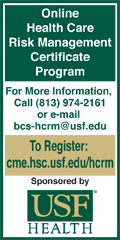



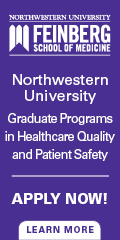

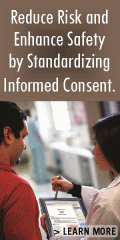

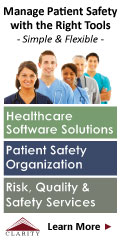












|
 |
